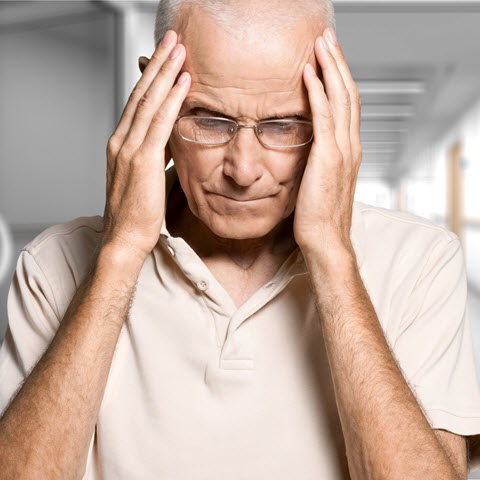Would you like to be able to identify a stroke? Senior Home Plus explains how to protect your elderly relatives.
 Stroke
Stroke
Every year, stroke affects 113,000 individuals, shattering lives and disrupting daily routines. Death, disability, and the sudden onset of strokes underscore the critical need for immediate action. With over a decade of dedicated efforts, it's crucial to once again raise awareness collectively to save lives.
Recognizing the emergency signs
Find YOUR ideal care home NOW!
Knowing how to respond is vital from the outset. Detecting the onset of a stroke can be challenging, but early alertness from friends and family significantly improves recovery chances. Facial or arm paralysis, speech disturbances, balance issues, visual changes, and severe headaches serve as the initial indicators of an emergency.
Educating yourself on stroke symptoms
Understanding the various precursor signs of stroke, especially prevalent among the elderly, is paramount. While strokes can occur at any age, older individuals are most susceptible. Thus, recognizing symptoms when caring for elderly relatives becomes imperative.
Swift response to stroke symptoms
Stroke ranks as the primary cause of acquired motor disability in adults and the second leading cause of dementia post-Alzheimer's. With a narrow 4.5-hour window for response, every minute counts from the first symptom manifestation.
The prognosis of a stroke victim heavily relies on the speed of treatment.
Identifying stroke symptoms:
- Facial numbness
- Loss of strength
- Speech difficulties
- Difficulty understanding
- Numbness in limbs
- Sudden loss of balance
- Severe, unusual headache
- Visual disturbances
When to Seek Immediate Medical Help for Stroke Symptoms
| Symptom | Why Seek Immediate Help | What to Do |
|---|---|---|
| Sudden Numbness or Weakness | Indicates the possibility of brain damage | Call emergency services immediately |
| Sudden Trouble Speaking | May indicate a blockage in the brain | Call for help immediately |
| Sudden Severe Headache | Could be a sign of brain hemorrhage | Seek immediate medical attention |
| Sudden Vision Loss | Could indicate a stroke or TIA | Go to the emergency room or call 911 |
If your loved one presents one or more of these symptoms, call the Emergency Services immediately: 112 or 999.
If you want to know more about the strokes visit the stroke association.
We are here to help you choose a care home or facility best suited to your needs. Do not hesitate to contact us on the following number: 0230 608 0055 or fill out this form.
Q&A:
1. What are the most common symptoms of a stroke?
The most common stroke symptoms include sudden numbness or weakness, especially on one side of the body, difficulty speaking or understanding speech, severe headache, and vision problems like blurred or double vision.
2. Why is it important to seek immediate help if I notice stroke symptoms?
Immediate medical help is crucial as early treatment can significantly reduce brain damage and improve the chances of recovery. The sooner the stroke is treated, the better the chances of minimizing long-term effects.
3. What should I do if I see someone showing signs of a stroke?
If someone shows signs of a stroke, it is important to call emergency services (911) immediately. Don’t wait for the symptoms to improve. The faster the treatment, the better the outcome.
4. How do I recognize if someone is having a stroke?
To recognize a stroke, use the FAST method:
- F: Face drooping or uneven smile
- A: Arm weakness or numbness, especially on one side
- S: Speech difficulty or slurred speech
- T: Time to call the emergency if any of these symptoms are present
5. Can I prevent a stroke from happening?
While not all strokes can be prevented, managing risk factors such as high blood pressure, high cholesterol, diabetes, and smoking can reduce the likelihood of having a stroke. Regular exercise and a healthy diet also contribute to stroke prevention.
6. What is the significance of a sudden severe headache during a stroke?
A sudden, severe headache, especially in hemorrhagic strokes, can be a sign of brain bleeding. If this happens, immediate medical attention is needed to prevent further damage.
7. Can stroke symptoms be temporary?
Yes, some strokes, like transient ischemic attacks (TIAs), may cause temporary symptoms that resolve within 24 hours. However, TIAs are a warning sign for future strokes, so medical attention should still be sought immediately.
8. How can I recognize a stroke in a loved one who may not be able to speak?
Look for signs of weakness, especially on one side of the body. If a loved one has difficulty lifting an arm or their face is drooping, it may be a sign of a stroke. Additionally, if they seem confused or disoriented, it’s essential to call for medical help right away.
9. How do I know if I’m having a TIA or a full stroke?
A TIA (mini-stroke) has similar symptoms to a full stroke but lasts for a short period (usually less than 24 hours) and doesn’t cause permanent damage. Even if symptoms resolve, it is important to seek medical help immediately, as TIAs increase the risk of a full stroke.
10. What happens after I call for help in the case of a stroke?
Once emergency services are called, paramedics will transport the person to a hospital where stroke specialists will evaluate and begin treatment. Early intervention is critical to restoring blood flow to the brain and reducing long-term complications.

